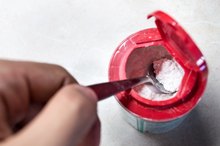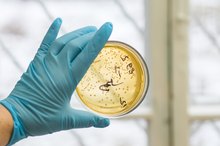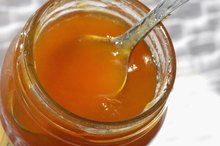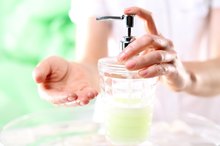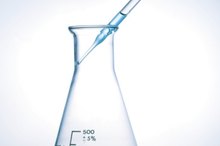How Do Preservatives Prevent Mold?
Many of the food items humans enjoy are appetizing to molds and other fungi, too. Preservatives like vinegar, potassium sorbate and sodium benzoate inhibit the growth of molds and other undesirables, so food stays edible for a longer period of time. These chemicals work their magic in a variety of ways.
Acid
Vinegar is one of humankind's oldest preservatives; people have pickled food to prevent it from spoiling since ancient times. Pickling both delays spoiling and enhances flavor as well. The highly acidic lactic acid and vinegar solution make the inside of a pickle jar a hostile environment for most microorganisms, which is why pickles don't grow mold quite so rapidly as cucumbers left too long at the back of your fridge.
- Vinegar is one of humankind's oldest preservatives; people have pickled food to prevent it from spoiling since ancient times.
- The highly acidic lactic acid and vinegar solution make the inside of a pickle jar a hostile environment for most microorganisms, which is why pickles don't grow mold quite so rapidly as cucumbers left too long at the back of your fridge.
Chelators
Potassium Bisulphite as a Food Preservative
Learn More
Many of the enzymes that play crucial roles in fungi and other microorganisms need metal ions like magnesium to function. These metal ions act as cofactors or enzyme-helpers. Metal chelators like EDTA bind tightly to metal ions; they deny them to fungi and other troublemakers. By reducing concentrations of important cofactors in various food products, EDTA can work together with other preservatives to help delay mold growth.
- Many of the enzymes that play crucial roles in fungi and other microorganisms need metal ions like magnesium to function.
- Metal chelators like EDTA bind tightly to metal ions; they deny them to fungi and other troublemakers.
Antimicrobials
Other preservatives are poisonous to microorganisms and react with important molecules in the microbe to damage it or even kill it altogether. Benzoates, for example, are weakly antimicrobial compounds that work best at acidic pH; in a more acidic solution, most of the benzoate molecules are found as benzoic acid, which is better able to cross bacterial and fungal membranes. Potassium sorbate is similar in that it also works best at acidic pH. According to the book "Mechanism and Theory in Food Chemistry," scientists aren't yet entirely sure how these preservatives work, although it's believed they disrupt the membrane transport system of the fungus 3.
- Other preservatives are poisonous to microorganisms and react with important molecules in the microbe to damage it or even kill it altogether.
- Benzoates, for example, are weakly antimicrobial compounds that work best at acidic pH; in a more acidic solution, most of the benzoate molecules are found as benzoic acid, which is better able to cross bacterial and fungal membranes.
Sulfites
Bicarbonate of Soda Vs. Sodium Chloride
Learn More
Sulfur dioxide, sulfite salts and bisulfite salts are collectively called sulfites in the food industry because sulfite and bisulfite ions can convert to sulfur dioxide and vice versa in solution. Sulfur dioxide is able to cross microbial cell membranes; once inside, it wreaks havoc with a remarkable variety of pathways in the microbe, reacting with nucleosides, amino acids, coenzymes and pyrimidine bases. These destructive reactions may be fatal for the fungus. Unlike fungi, humans and other mammals have an enzyme that can convert sulfite to sulfate and thereby render it harmless.
- Sulfur dioxide, sulfite salts and bisulfite salts are collectively called sulfites in the food industry because sulfite and bisulfite ions can convert to sulfur dioxide and vice versa in solution.
- Unlike fungi, humans and other mammals have an enzyme that can convert sulfite to sulfate and thereby render it harmless.
Related Articles
References
Writer Bio
Based in San Diego, John Brennan has been writing about science and the environment since 2006. His articles have appeared in "Plenty," "San Diego Reader," "Santa Barbara Independent" and "East Bay Monthly." Brennan holds a Bachelor of Science in biology from the University of California, San Diego.

